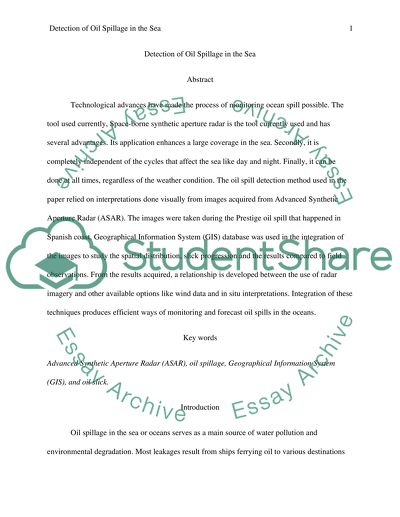Cite this document
(“Detection of Oil Spillage in the Sea Research Paper”, n.d.)
Retrieved from https://studentshare.org/engineering-and-construction/1444902-project
Retrieved from https://studentshare.org/engineering-and-construction/1444902-project
(Detection of Oil Spillage in the Sea Research Paper)
https://studentshare.org/engineering-and-construction/1444902-project.
https://studentshare.org/engineering-and-construction/1444902-project.
“Detection of Oil Spillage in the Sea Research Paper”, n.d. https://studentshare.org/engineering-and-construction/1444902-project.


